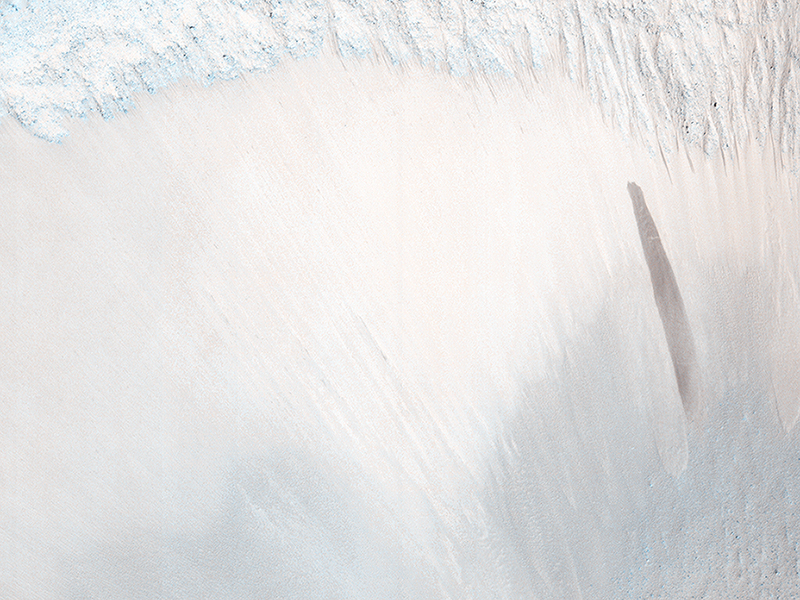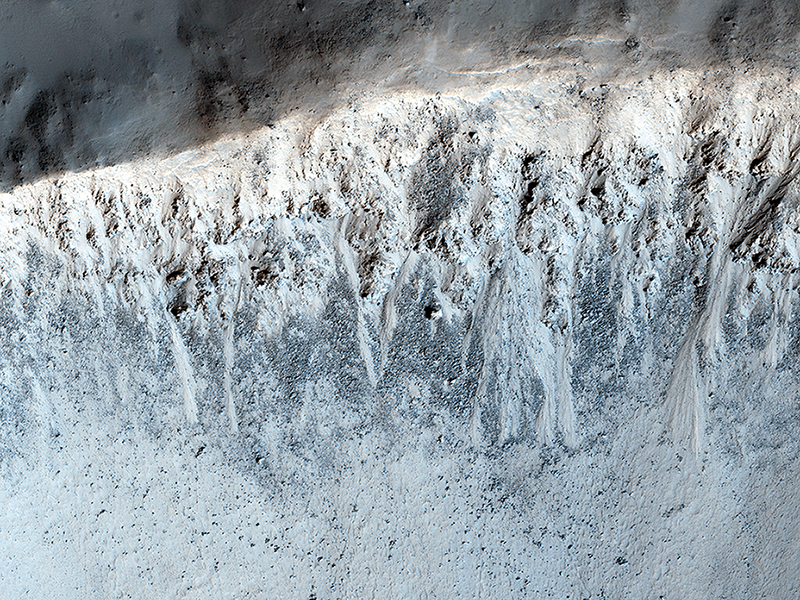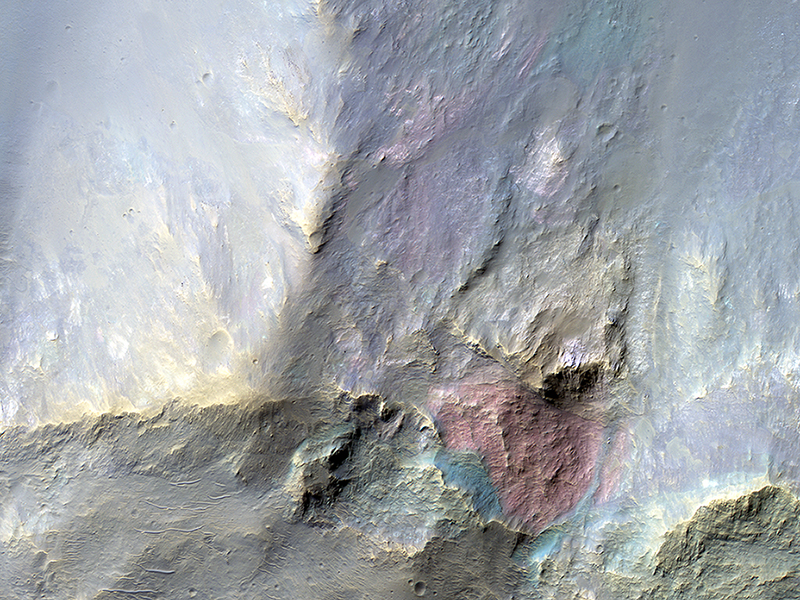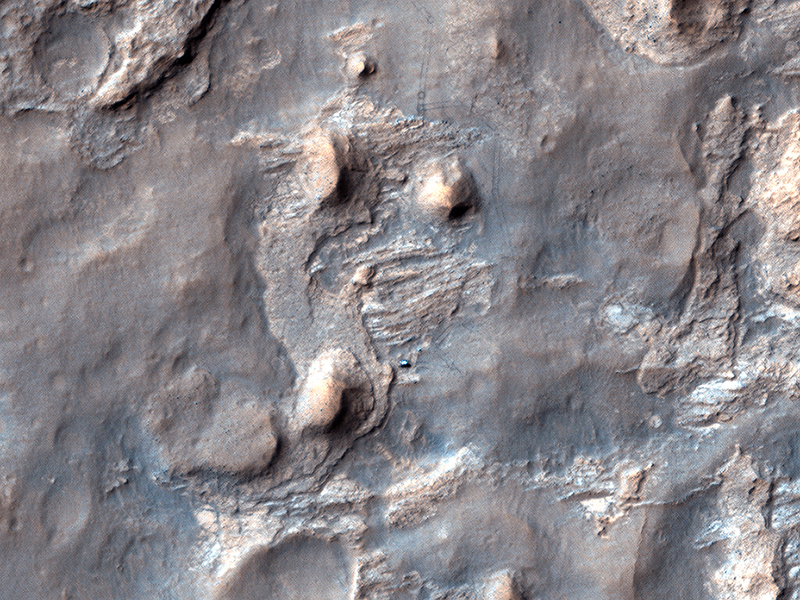Alfred McEwen wrote:A Surprise Landslump in Melas Chasma (ESP_035028_1685) (HiClip)
HiRISE has been monitoring the recurring slope lineae (RSL) over the mid-latitude and equatorial regions of Mars. One of these sites is a crater on the floor of Melas Chasma; and an animation shows how the RSL follow the sun, changing slope aspect with the seasons.
In one of our most recent images of this site, there was a surprise: a new dark streak just down slope from the RSL. This new streak is about 18 meters wide, whereas most RSL flows (see closer to the crater rim) are less than 5 meters wide. Closer inspection shows that the dark streak corresponds to a topographic slump, similar to several others visible on this slope.
This is one of the largest topographic changes we've seen in equatorial regions of Mars. We are continuing to monitor this location to see if this streak fades in the same manner as RSL, and to understand its relationship, if any, to the RSL activity. If the RSL are due to seeping water, then saturation of a layer downslope could destabilize the slope and lead to such slumps.
Alfred McEwen wrote:Equatorial Gullies on Mars (ESP_035945_1755) (HiClip)
Although gullies are most common in the middle latitudes of Mars, they are also found in equatorial regions. This image shows a 3-kilometer-wide impact crater with gullies all along the steep inner slopes.
An enhanced-color cutout better distinguishes the gully deposits from the surrounding boulder fields. These slopes are very steep, so a fluid like water is not required to explain gully formation.
Alfred McEwen wrote:A Big Block of Red Bedrock (ESP_035998_1555) (HiClip)
This image covers a 26-kilometer-wide impact crater northeast of the Hellas impact basin. The crater exposes large blocks of bedrock (called "megabreccia") in both the central uplift and in the walls of the crater.
The enhanced-color subimage from the wall shows a large, approximately 250-meter-wide reddish block, although actually "red" in the infrared-shifted color of HiRISE. These blocks could be ejecta from the ancient Hellas impact or other large impacts from billions of years ago.
Alfred McEwen wrote:Curiosity Ready to Drill for Gold at the Kimberley (ESP_036128_1755) (HiClip)
Black gold, that is: organic material, which could be a biomarker (sign of past life), the holy grail of Mars exploration.
Last December at the fall meeting of the American Geophysical Union in San Francisco, MSL Project Scientist John Grotzinger talked about what the team learned at Yellowknife Bay, and why they would stop and drill again at a place named “the Kimberley.”
The mudstones at Yellowknife Bay had been exposed recently—to a geologist—less than 100 million years ago. They deduced that this was due to erosion of overlying layers by the wind, and that even younger exposure ages should be possible closer to the scarp.
This matters because Mars doesn’t have a magnetosphere and thick atmosphere like Earth, protecting us from energetic particles from space that break down organic material. Thus, rocks that have been near the surface of Mars for a long time (geologically speaking) are less likely to contain complex organic material. Complex organic material might be the remains of past life, or at least inform us about past habitability. And when we say “habitability,” we mean the potential to support life, whether or not life ever actually existed there.
The rover had left Yellowknife Bay and wasn’t going to turn around, but similar scarps lay ahead, on the way to Aeolis Mons. Last December they had already chosen their next target—the Kimberley—where they recently arrived, in part because it also has what appear to be geologically young scarps. This new HiRISE image shows the rover approaching one of the scarps. (See also the stereo anaglyph of this site produced from this image by Tim Parker at JPL. )
Credit: NASA/JPL/University of Arizona
<< Previous HiRISE Update



